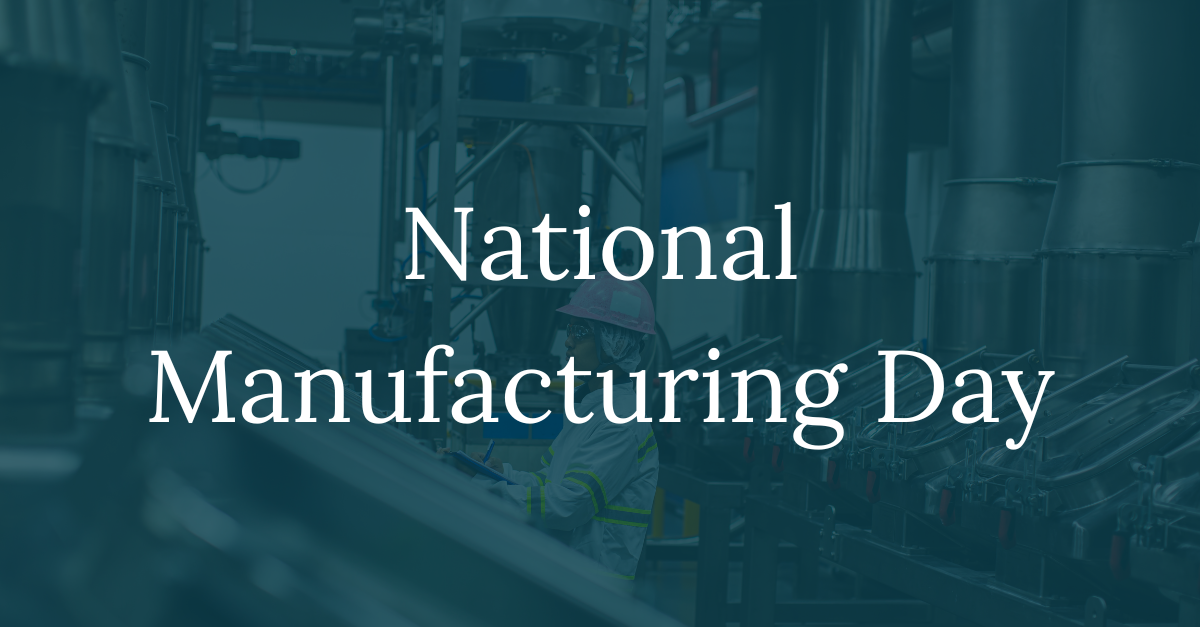
Manufacturing in a Shifting Economic Landscape: Challenges and Opportunities in 2024
Throughout the past several weeks, manufacturers have begun seeing signals that the U.S. economy is beginning a new economic cycle. The economy overheated after robust growth following the COVID-19 pandemic, accelerating inflation. The Federal Reserve launched several rate increases to combat the inflation in March 2022. With inflation trending toward the Fed’s target, the consensus is increasing that the economy has accomplished the sought-after “soft landing.” The recent and surprising half-point interest rate cut is a powerful indicator of the Fed’s confidence that inflation is tamed and the subsequent economic cycle is beginning.
After an extended period of high interest rates, uncertain recession prospects and conservatively managing operations, it’s time for manufacturers to adopt a more proactive mindset. With many of the most severe economic risks believed to have subsided, manufacturers can take stock and assess their most critical priorities as they ready their organizations for healthier growth and a profitable outlook. The shift in mindset should be from conservative decision-making and the protection of cash to a more growth-oriented one that can be responsive to the market and exploit opportunities to increase profitability and capture market share.
Each organization’s priorities are different. However, there are some worth considering:
Debt Restructuring for Manufacturers
Restructuring high-interest debt into lower rates won’t be an immediate action item but is something to monitor closely and exercise quickly when the time is right. Every economic cycle launches with a series of Fed rate cuts to fuel economic growth, followed by rate increases as the economy heats up and the Fed needs to throttle growth. During each of these decrease/increase cycles, the duration of movements in each is imbalanced. Since July 1995, downward rate adjustments that loosen monetary policy have happened faster than upward tightening. Generally, the maximum extent of loosening has occurred within 12 months of initiating. Once loosening begins, manufacturers should monitor closely and time debt restructuring to coincide with the cycle’s low.
Productive PPE Investments for Manufacturing Businesses
With rates declining, there will be opportunities to fund expansion and investments previously deferred due to the impact of high interest rates on the projects’ ROI. Assessing those opportunities, conducting preliminary engineering and preparing suppliers and vendors for investments will provide manufacturers an advantage in securing needed equipment when those suppliers might become capacity-constrained. Having projects ready to launch and striking when liquidity increases represents an opportunity to capture market share and boost profitability while competitors struggle to keep pace.
Raw Materials and Cost of Sales for Manufacturing Companies
Raw materials and sales costs are significant drivers of profitability, and it can be helpful to think of them through the lens of cost and continuity.
- Focus on optimizing your sourcing and procurement strategy.
- Identify spend categories where pricing increases have outpaced broader inflation and pockets with deflationary pressure.
- Go back to suppliers to claw back inflated prices and protect margins. Or consider diversifying your supply base to make it more competitive, resilient and responsive to your organization’s needs.
- Identify key supply chain metrics and track meaningful data to evaluate how your business has responded to recent disruptions or fluctuations in demand.
Understanding the impacts of material shortages, lost productivity or lengthier cash conversion cycles is critical to weathering and protecting your organization from similar challenges in the future.
Trade Policy Impacts on the Manufacturing Industry
With the upcoming presidential election, there is uncertainty and speculation over both administrations’ potential trade policies and what that means for manufacturers who rely on imported raw materials. Both Democrats and Republicans have endorsed trade tariffs in varying forms, citing the objective to boost domestic manufacturing and innovation and protect American jobs. Even if the business and economist communities have expressed skepticism as to the wisdom of levying tariffs, both potential administrations’ endorsement of tariffs means businesses must take note and respond accordingly.
Trump is proposing a universal 10% tariff on all imports and a 60% tariff on all goods from China. While Harris hasn’t been clear if she would extend the tariffs recently imposed by the Biden administration, which included higher tariffs on Chinese semiconductors and lithium batteries, it appears, based on other statements made by her campaign, that she supports these tariffs.
While the details of any potential tariff regime are speculation, there is substantial risk of retaliatory tariffs from other countries that exporting manufacturers must consider. These concerns may require reshuffling of operations to mitigate costs and localize production. There will be complexity and trade-offs as businesses react to the rapid change and potentially end up passing on higher costs to consumers, leading to further economic uncertainty.
First, evaluate the impact of potential tariff increases on your products’ bill of materials (BOM). Consider the discussion above regarding how to make your supply base more resilient. And explore opportunities to “nearshore” in Canada, Mexico or Asia, and to “reshore” in the US.
Navigating through a shifting economic landscape can be challenging. If you need guidance improving your organization’s resiliency, our Manufacturing Industry Group can help. Please get in touch with us for strategies specific to your business needs.

